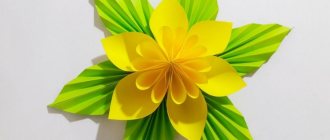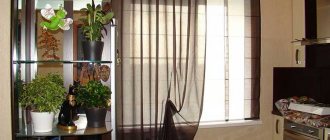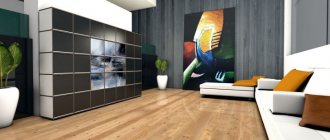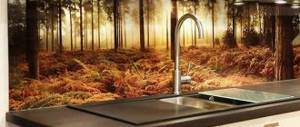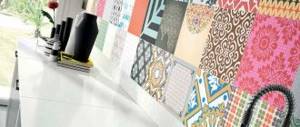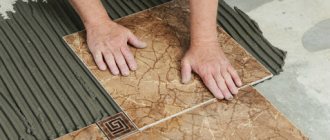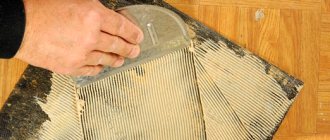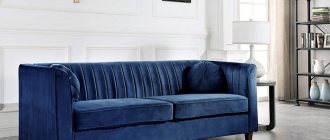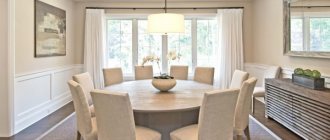What is a panel?
A panel is a kind of painting with a concrete or abstract plot. Usually it consists of several tiles assembled into a single composition. It can be from 2 to 9 tiles or much more, or maybe one large slab. The imagination of manufacturers here is varied.
It is clear that one would like to bring such beauty to the most prominent place. Choose: behind the sink, behind the stove, or in any space free from kitchen appliances and utensils. In any case, you need to know in advance what and where will be located within your kitchen space. Do you already know this?
Choosing a panel plot for the kitchen
The tile panel should be in harmony with the surrounding interior as a whole and, in particular, be combined with the base tiles around it. If you choose a specific interior style, for example, Provence or country, then the panel must fit into your style.
Do you already have ideas? If not, you can always find them. For example, go shopping, look through catalogs of ceramic tile sellers in the same stores or on websites, look through magazines on interiors, talk with consultants in the store. And it should be noted that a good consultant can always lead you in the right direction.
Choose what is closer to you - wine theme or coffee and tea theme? Or maybe one of these options: desserts, honey and honeycombs, nuts, flowers, countries/travels, natural landscapes, marine themes (although it’s closer to the bathroom, but why not), megacities theme, fish or fruit vegetable? Or maybe you are a lover of Russian classics and the theme of “Khokhloma” or “Gzhel” is close to you? Or do you want to have a copy of a painting by a famous artist or a photograph in your kitchen, including one taken from your personal archive? Modern technologies provide almost unlimited possibilities.
Design options
There are many design variations; each manufacturer offers different series and collections, consisting of images of similar themes or united by the same style. Drawings can be large and small, neutral and contrasting, realistic, contour or abstract. And in order for the panel to fit into the interior of the kitchen, you need to take into account the interior design. But the wishes of the residents are also taken into account.
| Tile panel design options: | |
| Gastronomic prints | Fruits, berries, vegetables, baked goods, ready meals. All this is appropriate in the kitchen, one of the purposes of which is eating and sharing breakfasts, lunches and dinners. Such images stimulate the appetite and support the culinary theme; they are appropriate in classic interiors. And the stylish design can be refreshed with 3D drawings of juicy berries and fruits in splashes of water. |
| Floral motifs | Fresh greens, foliage. Green color refreshes the interior, improves mood and increases appetite, and it looks organically in a modern and stylish design. |
| Floral prints are universal | By choosing the right flowers, you can organically fit them into the classic style, Japanese, Provence, Mediterranean. The panel can depict lilies of the valley, sunflowers, peonies, roses, daisies, tulips, and lotuses. |
| Geometry | Simple and symmetrically arranged geometric figures will fit into a classic interior, while chaotically scattered across panels and having different sizes, shades and shapes will emphasize the exclusivity and creativity of youthful and bright design. |
| Landscape images | Lagoons, forests, islands, beaches. |
| Urban prints | Outlines of cities. |
| Abstraction | The images are as far removed from reality and reality as possible. But you shouldn’t choose intricate and complex prints: they can distract from eating. |
| Graphic patterns | They look stylish and original in modern interiors, adding creativity and originality to the design. |
| Sights of different cities and countries | This design will be appreciated by travelers and romantic individuals. The Eiffel or Leaning Tower of Pisa, Tower Bridge, Big Ben, the Statue of Liberty or other famous objects can be displayed on the kitchen wall. |
| Curls, monograms | They can look simple or luxurious, depending on the design and color scheme. |
| Pop art images | Their distinctive features are bright and rich colors, clear, obvious contours and contrasts. In the kitchen, use drawings of drinks, food, fruits. |
Types of tile panels for the kitchen
Conventionally, panels can be divided into two categories:
- mass production;
- individual order.
The number of factories engaged in mass production, both Russian and imported, is greater than ever. As they say, “choose - I don’t want.” But you want it, so feel free to go to stores specialized in this area and choose from all the splendor of products.
It also happens - you have an idea, but you haven’t found a tile panel to go with it. In this case, there are several custom-made options:
- hand-painted ceramic tiles;
- ceramic photo tiles;
- glass cloth with photo printing (thrown off);
- stained glass panel;
- mosaic panel.
Custom-made tile panels are relevant, including for cafes, restaurants and culinary studios with a kitchen space open to visitors. In this case, it is possible to apply corporate colors, logos and other images approved by the brand book.
It is clear that everything created according to your individual order is usually priced higher than any mass production. Keep this in mind when calculating your renovation budget.
Let's talk about the types of panels based on materials and tile formats.
Mosaic panel
Mosaic is a scattering of small ceramic or glass tiles, ranging in size from 1 to 5 cm, which can become a single canvas only through enormous patience, labor and skill. There is a mosaic already assembled in separate parts of the plot on flexible bases, and this makes the work much easier and allows you to lay out large areas at once.
More often, mosaic is used for bathrooms, but if mosaic warms your soul, no one bothers you to show imagination, a non-standard approach and come up with something special. The idea of making a panel from fragments of ordinary ceramic tiles will also help with this. This is a labor-intensive process, but it pays off with the opportunity to create something completely unique.
Ceramic tile panel
In this case, the size of the tiles is already much larger. The most common: 10*10, 20*20, 20*30, 30*30, 30*40, 25*45cm. Please note that the surface of ceramic tiles can be glossy or matte. What is closer to your interior or taste is up to you.
As we have already said, ceramic tiles are available in mass and individual production. The first one can be bought immediately or, if the seller is not in stock, ordered from the catalog and wait until it is delivered from the manufacturer. By the way, very often the panel is part of a ready-made collection, which includes base tiles, inserts, and borders. You can immediately buy the collection and be sure that your “apron” or wall will look absolutely harmonious.
If you need something individual, then order hand-painted or photo tiles. The production of photo tiles takes from 3 to 14 days. Approximately the same time frame is required for hand-painted tiles, although in the latter case it all depends on the complexity of the image. Originality often takes more time than standard things.
What is good about photo tiles? Absolutely any image that exists in digital form can be applied to it. Want your family photo? Please! Do you want a painting by a famous artist or a photo of a city landscape? No problem.
The most common methods for producing photo tiles are the decal method and the sublimation method. Let's talk about the first method. The image you choose is printed on a digital printer using special inks, applied to the tile, and then fired at a temperature of 800-900 degrees. Such tiles are not afraid of any influences - neither mechanical, nor chemical, nor temperature. And in general, it will serve you for 50 years, according to the manufacturers.
Phototiles made using the sublimation method have two advantages and one significant disadvantage. Sublimation means brighter and more saturated colors and a more affordable price. The downside is only a 2-year warranty on image preservation with proper care.
A panel of hand-painted tiles is durable, like any mass-produced tile, since the design is also fixed by firing at high temperatures. It’s up to you and the painting artist to decide what the drawing will be like.
Glass panel with photo printing (skinned)
Skinali are large sheets of glass with an image applied to them from the inside or outside using digital printing. The image, as in the case of photo tiles, can be applied to absolutely any image, as long as it is in digital form.
The most common location for such a panel is the kitchen “apron,” since glass is probably the most convenient material in terms of maintenance. To make the skinali, especially strong glass with a thickness of at least 5 mm is used. For greater confidence, you can use tempered glass, its strength is 5 times higher, but the cost will also jump very noticeably.
Skinali are very easy to install; the glass is attached to the wall using various fastening systems (hooks, frames, etc.). Professionals never use glue when installing glass, as it spoils the image.
Stained glass panels
Such panels are made according to your individual order using the fusing method. Stained glass is an image made from multi-colored pieces of glass and fired at very high temperatures. It is very beautiful and very expensive. Not the most common type of panel for kitchen walls; more often, such glass is used to decorate inserts in interior doors and kitchen facades.
Mirror panels
A panel of mirror tiles in the kitchen is also not common. It consists of tiles of different geometric shapes, made of mirror cloth. Such a panel expands the visual space and adds light to the room. The big disadvantage of a mirror panel is that it requires constant maintenance, since any, even very small, drop is visible on it. But, if you are ready that such beauty requires your sacrifices for regular washing, then decisively use this design move in your kitchen. Or place a mirrored panel in the dining area where there is less splashing.
Floor panels
The peculiarity of a ceramic tile floor is its practicality. This base is quite strong, durable, easy to care for, and you can always choose a beautiful panel that will make the finish original. Today, this type of decoration is used in hallways, kitchens, living rooms, baths and other rooms where style dictates it.
Floor tiles are produced using various technologies, as a result of which we obtain porcelain stoneware, metlakh tiles and clinker. Collections of mosaic floor panels, which are produced using different technologies, are also on sale. Having such a choice of floor finishes, you can always choose a finishing option that will harmoniously fit into the interior and become its highlight.
Features of installing tile panels in the kitchen
If it is ceramic tiles or mosaics, then use regular tile adhesive, which sales consultants at a hardware store can easily tell you about. Or you can easily choose it yourself, especially since tile manufacturers usually give their recommendations on auxiliary materials for installation.
When installing, take into account such spatial solutions as the need to visually extend the space of the “apron” or, conversely, expand it. This, of course, needs to be taken care of in advance, even at the stage of selecting the panel. And, if necessary, it is better to buy panels made of rectangular tiles. When positioned vertically, they will increase the height of the “apron”; when positioned horizontally, they will stretch it in width.
Also think about the possibility of using friezes and borders in the design of panels. They will create a frame around the panel, giving it an even greater resemblance to a painting. The border also helps to harmonize the panels and the base tiles in color or texture.
Grout for seams. You will need it if you did the styling with seams in mind. Tile panels can be laid without seams if the edges of the tiles have very precise dimensions and absolutely right angles, which is rare. Most often, tiles are laid with seams; they allow you to level out any dimensional inaccuracies. In order not to spoil the single composition with seams, they are made as thin as possible, within 1 mm. You can use transparent grout, you can match it to the main color of the panel, or vice versa, make it in contrast with the main colors.
Caring for kitchen tile panels
Well, your dream of a beautiful kitchen has come true. All that remains is to save it. Let's talk about care, simple but necessary. The panel requires cleanliness, be it in the kitchen or anywhere else. Any detergent will do, with a few exceptions. If you have a panel made of glass or photo tiles using the sublimation method, then abrasives are excluded.
There are two more tips for glass panels. Do not heat them more than 80 degrees and do not shock them by sudden temperature changes, otherwise the glass will crack.
Make your choice, invent, create and enjoy your kitchen.
Types of panels for the bathroom
When choosing decoration for the bathroom, it is worth considering what types of panels there are. And it’s immediately worth noting that the type of construction depends on the material used.
Panel from one tile
You shouldn’t be surprised here, but indeed the panel can consist of one tile, which is ideal for small rooms. And such a panel can be presented in the form of an independent or completely completed plot.
As a rule, such tiles contain images of flowers and animals, but recently space and fantastic bas-reliefs, as well as photographs of famous and beautiful people, have become especially popular. You can choose panels with convex images, this will enhance the visual effect.
For reference! Panels of one tile are rarely sold separately; they are usually supplied complete with the main background.
Panel of several tiles
This element of decor for the bathroom is especially popular and differs from a single-tile panel in that the image is not applied to a single tile, but is divided into several. This one is like a puzzle, only the elements in it are geometrically correct in shape, the same size and with smooth edges.
The pattern can consist of two or several tiles and the panels are laid in the traditional way, only the elements are glued end-to-end, leaving no gaps between them.
For reference! Paintings can only be square or rectangular in shape; shaped images cannot be made, since the tiles are standard.
Frisize
In design, frisize means a free-size pattern that can be combined and continued as much as you like. And here there are two directions. The first direction is characterized by the fact that the drawing can be “increased” as much as desired. The panel consists of three parts - lower, upper and middle, with the help of which the picture is built up.
For example, the panel depicts a tree. The upper part is the crown, the lower part is the roots. They cannot be swapped, but the middle part - the barrel - can be extended as much as the picture requires.
The second direction is associated with the fact that the elements do not have clear boundaries, that is, it is impossible to assemble a ship or animal from such a panel. The element depicts a small but complete figure plus fragments of other figures.
All elements can be combined to your liking and this is how paintings depicting a starry sky or a flower meadow are born.
Mosaic
Labor-intensive, expensive, but original tile decor for the bathroom. Such a panel is created from small elements no larger than 3 cm in size. The mosaic panel really looks unusual in the photo and is liked by many, despite the high price, but it is only suitable for spacious rooms.
The thing is that mosaics are solid tiles of different colors, that is, each fragment has its own specific color. And up close, such a panel will look like a blurry picture, which is why such decor should not be considered for a small bathroom.
Panel 3D
Today, 3D photos will not surprise anyone, but such a panel can be called the most worthy. True, amateurs should not undertake such finishing, because the choice of panels depends on the configuration of the room and lighting.
A three-dimensional image is most often made on the basis of tiles, so for the floor it is worth using another decorative technique called self-leveling floors.
Phototile
Photo tiles are similar to 3D panels, although the effect of presence is no longer there, but the price for such decor is more affordable.
Despite the novelty of photo tiles, the technology has been clearly proven and craftsmen assure that the image remains clear for 50 years. And the thing is that after applying the photo, the tile is fired at high temperatures and the paint seems to be fused into the tile.
Advice! Before deciding on such decor for the bathroom, you should think carefully about the chosen photograph, because you will have to look at the image every day and not even a single year.
Glass panel
Despite the fact that glass is considered an inexpensive material, such panels are very expensive. The thing is that special colored glass tiles are used for production and, as a rule, it is always handmade.
True, with the correct layout and competent supply of light, glass panels look decent and impressive, so the high cost is completely justified.
Cheaper, but still expensive, is a mirror panel, which is made to order. But this decor is suitable for both spacious and small bathrooms.
